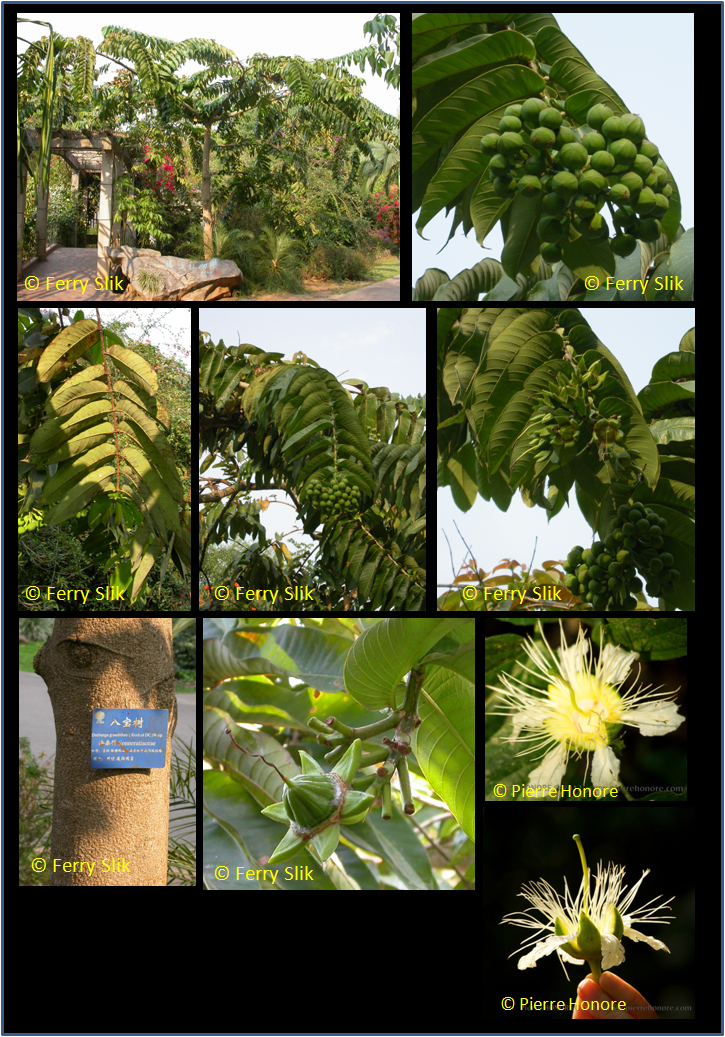Duabanga grandiflora (DC.) Walp., Repert. Bot. Syst. 2: 114 (1843)
Latin for 'large flowers', referring to the large flowers.Synonyms
Duabanga sonneratioides Buch.-Ham.
Lagerstroemia grandiflora Roxb. ex DC.
Leptospartion grandiflorum (Roxb. ex DC.) Griff.
Diagnostics
Can be separated from Duabanga moluccana by the flowers, which are 5-8 merous and with > 50
stamens in D.grandiflora, but 4-merous and only 12 stamens in D. moluccana. The distribution
of the two species does not overlap.
Description
Trees, medium to tall, 30[-40] m tall, glabrous. Leaves rigid, distichous; petiole to 1.2 cm; leaf blade
abaxially pale green, adaxially dark green, ovate to oblong, broad, 12-15 by 5-7 cm, abaxially glaucous,
lateral veins [12-]20-24 pairs, base cordate, apex shortly acuminate. Corymbs 3-20-flowered, drooping at
ends of branches; pedicels 3-4 cm, stout. Floral tube broadly campanulate, 1.6-2.5 by 1.8-3 cm; sepals
(5 or)6, green, thick, enlarged in fruit. Petals 6, white, obovate, 2.5-3 by 1.5-2 cm. Stamens numerous,
ca. 50 or more, white, surpassing petals. Capsules subglobose, 3-4 by [3-]4-4.5 cm, 6-9-valved. Seeds
4-6 mm. [from Flora of China]
Ecology
Valley forests, open places, especially on river banks; up to 1500 m elevation.
Uses
Wood used for tea-boxes and for house and boat-building. Malays eat the very acid fruits.
The flowers have an unpleasant odor.
Distribution
From eastern India to South China and Indochina into Peninsular Malaysia.
Local names
China: Ba bao shu.
Malaysia: Berembang bukit, Berembang darat, Bermah, Berombong bukit, Kendada, Kedada bukit, Pedada,
Pedada bukit, Pedada darat.
